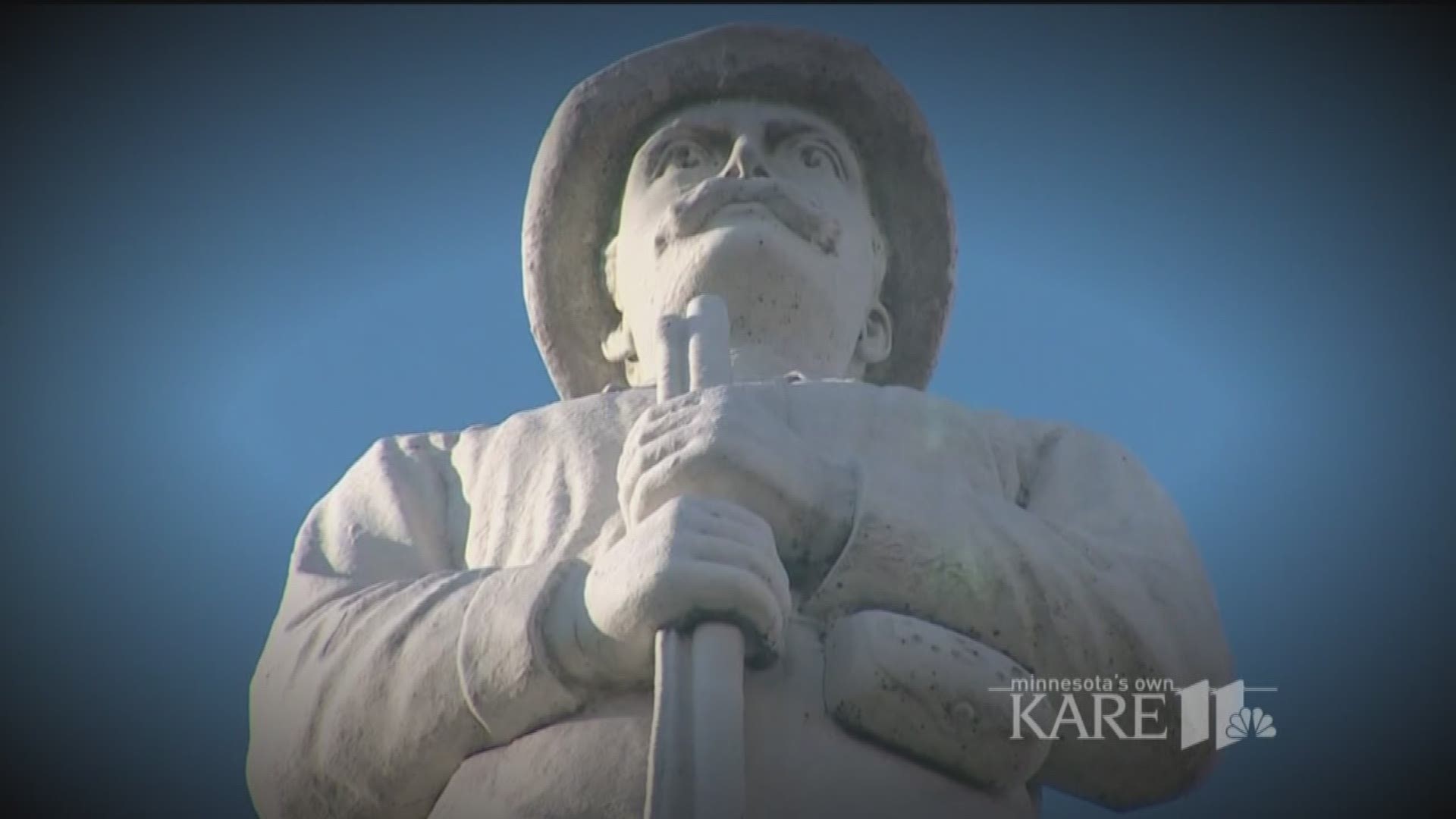ST. PAUL, Minn. – As the city of Baltimore took down Confederate monuments overnight, a long standing debate of history versus hate surges again: should the markers of the Confederacy stand as symbols of heritage, or topple as an immortalized reminder of hate?
The weekend tragedy in Charlottesville, centered around the removal of the statue of General Robert E. Lee, throws the role of these lasting monuments into question.
“Are there better ways we can interpret history?” said Melanie Adams, Minnesota Historical Society senior director of guest experiences and educational services.
“I think the purpose of a monument is to remember a time gone by, especially if you are looking at monuments removed were placed there a good 40 to 50 years after the Civil War, 1913-1920, during that Jim Crow time period,” said Adams.
Adams has a close connection to Charlottesville as a graduate of the University of Virginia. While Adams says the weekend events are disheartening and unbelievable, she believes the decision to remove statues should lie with each individual community.
“But, I will say I am a firm believer in interpretation over removal,” said Adams. “It is our job to help interpret history and make it relevant for today. We need the things, that is what makes a museum is our objects, our artifacts, our things so, without those, it’s hard for us to be able to tell those complete stories.”
Take the example, of six highly debated Civil War paintings recently moved in 2016 from Governor Dayton's office to another spot in the state capitol.
“They were moved and better interpreted, that's the key that people are missing, with proper interpretation, I think there is a way to use these things as educational resources,” said Adams.
Contex, she says, can help understand how history is evolving from one version of events to a modern, inclusive narrative.
“The time is right to have these discussions but I also want people to consider taking down the monument does not erase history,” said Adams. “I think it frustrates me when people say we are changing history has always been complex and we've always chosen to select one side of it.”
So as monuments speak to us, she cautions we have to recognize the story that they tell, and the story we'd like to tell 50 years from now.
“Women, people of color, Native Americans. I think we just have to broaden our thinking around who are we memorializing and why?” said Adams. “What society do we want our children to grow up in when they are walking to school in the morning? What monuments do you want them to pass along the way because the monuments you create show what you are proud of.”
A detailed report from the Southern Poverty Law Center in 2016 says at least 1,500 symbols dedicated to the Confederacy exist in public spaces in the U.S. They include statues, flags and holidays and are mostly in Southern states. Around 700 of those symbols are monuments.
The report also found the confederate monuments are also in border states that fought with the Union (like Kentucky, Missouri, West Virginia and Maryland); in Union states, including Massachusetts, Iowa and Pennsylvania; and states that in 1861 were mere territories, such as Montana, Arizona and Oklahoma.

